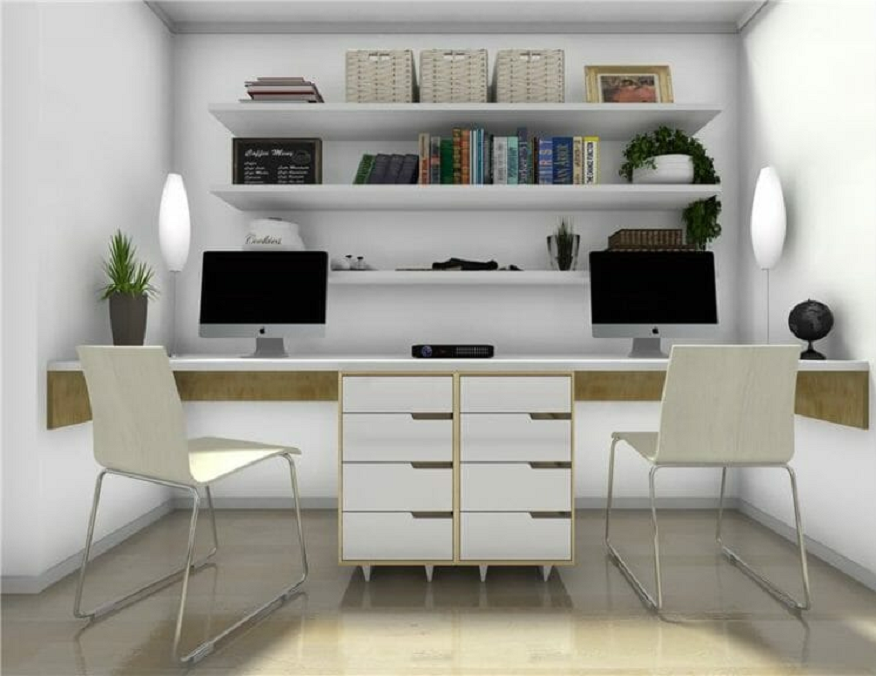
In today’s fast-paced and interconnected world, designing an office space that promotes collaboration and connectivity is crucial for the success of any organization. The choice of furniture plays a vital role in creating a functional and productive workspace. Two key pieces of furniture that enhance both collaboration and connectivity are the executive office table and laptop stand. Let’s explore how these elements can be incorporated into an office design to foster a conducive work environment.
The executive office table is a centerpiece of any office space. It serves as a gathering point for meetings, discussions, and collaborative work. When selecting an executive office table, it is important to consider both functionality and aesthetics. The table should be spacious enough to accommodate multiple individuals comfortably. It should also have built-in connectivity features, such as power outlets and USB ports, allowing easy access to electronic devices. By integrating technology into the table design, employees can seamlessly connect their laptops or tablets during meetings, enabling real-time sharing of information and enhancing collaboration.
Furthermore, the executive office table can be designed to promote face-to-face interaction among team members. For instance, a roundtable design encourages equal participation and fosters a sense of equality among employees. This layout eliminates the traditional hierarchical seating arrangement, allowing for more open and collaborative discussions. Additionally, incorporating ergonomic features such as adjustable heights and comfortable seating can enhance productivity and reduce physical strain during long meetings or work sessions.
Another essential piece of furniture that promotes collaboration and connectivity is the laptop stand. With the rise of remote work and flexible schedules, many employees rely on laptops as their primary work devices. A laptop stand provides a convenient and ergonomic solution to improve posture and productivity. It elevates the laptop screen to eye level, reducing neck and back strain. Moreover, a laptop stand with adjustable angles enables employees to customize their viewing positions, ensuring comfort during extended working hours.
Furthermore, a laptop stand can enhance connectivity by offering additional USB ports, allowing employees to connect peripherals like external keyboards, mice, or monitors. This flexibility enables a seamless transition between office and home work environments, ensuring consistent connectivity and productivity. Additionally, a portable laptop stand gives employees the freedom to work in different areas of the office, promoting collaboration and adaptability.
When incorporating the executive office table and laptop stand into an office design, it is crucial to consider the overall aesthetics and functionality of the space. The furniture should complement the office’s interior design, reflecting the company’s culture and brand identity. The use of high-quality materials, sleek finishes, and modern designs can create an inspiring and professional atmosphere.
Moreover, the arrangement of furniture should prioritize ease of movement and accessibility. Open spaces with ample room for employees to navigate between desks and meeting areas encourage spontaneous collaboration and interaction. Additionally, incorporating storage solutions like drawers or shelves in the executive office table and laptop stand can help keep the workspace organized and clutter-free, further enhancing productivity.
In conclusion, designing an office space that promotes collaboration and connectivity requires careful consideration of furniture choices. The executive office table and laptop stand are two essential pieces that contribute to a functional and productive workspace. By integrating connectivity features, ergonomic design elements, and customizable options, these furniture pieces enable seamless collaboration and adaptability. Furthermore, the overall office design, including aesthetics and spatial arrangement, plays a significant role in creating an inspiring and conducive work environment. With the right furniture and thoughtful design, organizations can foster a culture of collaboration and connectivity, leading to increased productivity and success.







